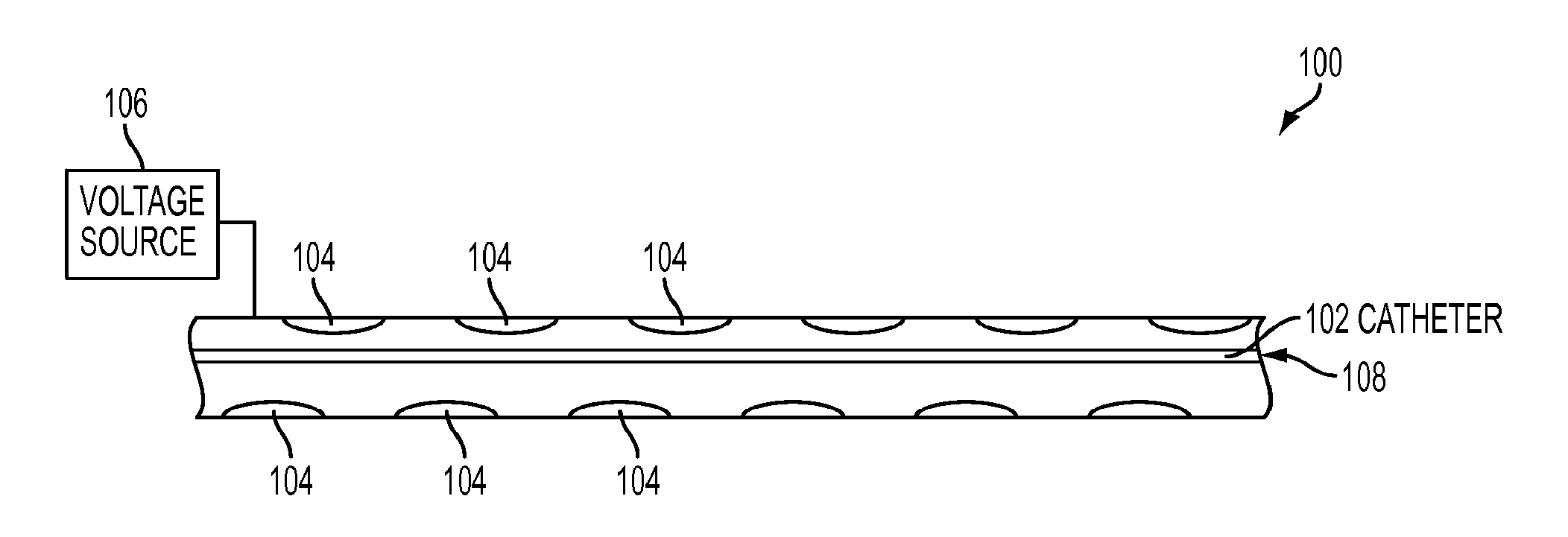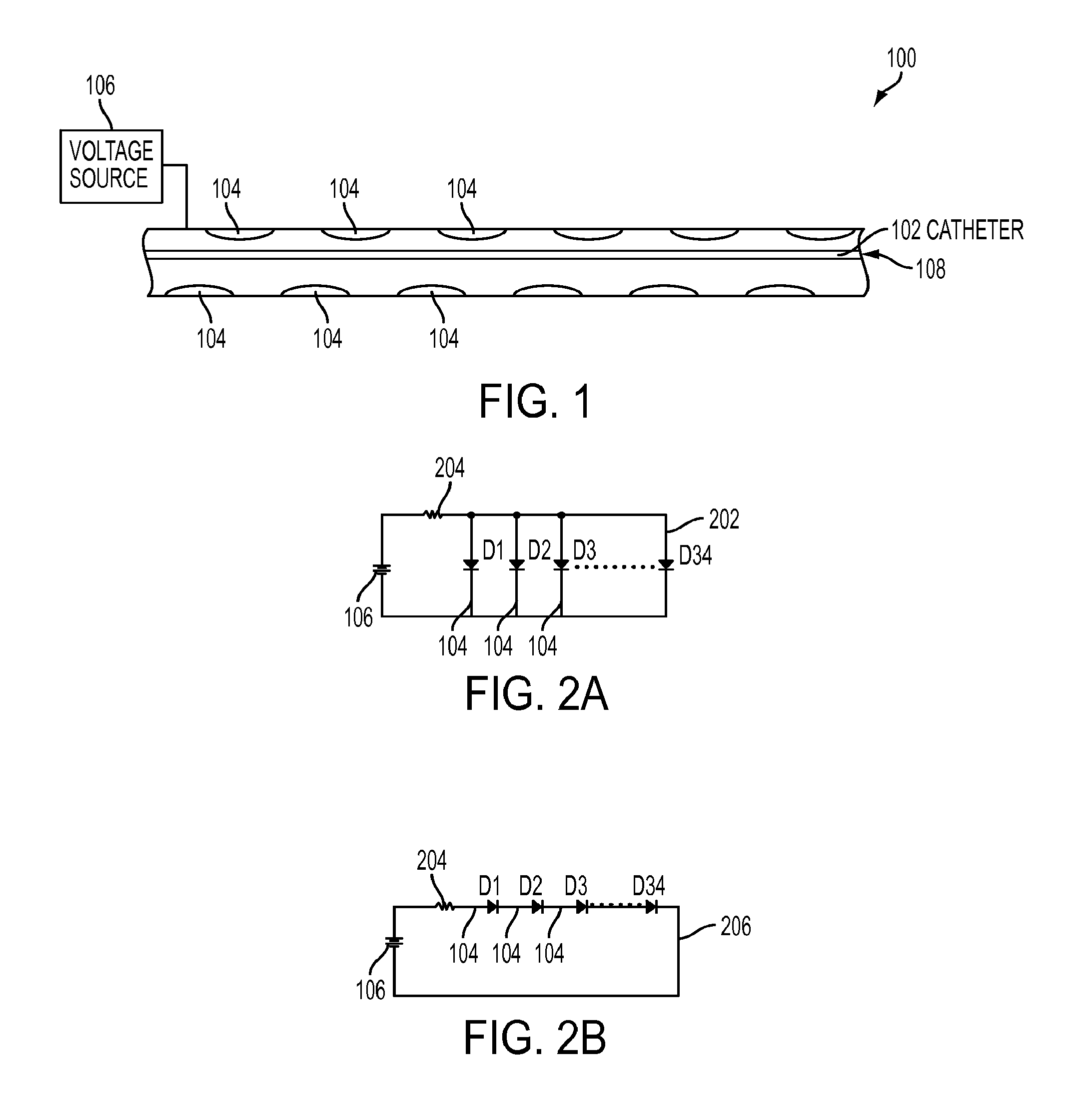Catheter/Stent System For Activation of Photodynamic Therapy Within The Catheter/Stent System
a catheter and stent technology, applied in the field of catheters and stems, can solve the problems of occlusion of tumors, pain, inflammation and infection, and bile buildup in the liver, and achieve the effect of removing occlusion
- Summary
- Abstract
- Description
- Claims
- Application Information
AI Technical Summary
Benefits of technology
Problems solved by technology
Method used
Image
Examples
Embodiment Construction
[0017]A preferred embodiment of the present invention will be set forth in detail with reference to the drawings, in which like reference numerals refer to like elements or steps throughout.
[0018]FIG. 1 is a schematic diagram showing a catheter / stent device 100 according to the preferred embodiment. A catheter 102 has multiple LEDs 104 set in it along its length, connected to a voltage source 106 such as a medical battery. The voltage source 106 can be located inside or outside of the patient's body, although it preferably has some way for the physician to turn it on and off for PDT. The LEDs perform PDT to keep the lumen 108 of the catheter 102 free of tumor cells and bacteria.
[0019]The catheter and the LEDs in one embodiment preferably have the following specifications:
[0020]Functional
[0021]Power output within lumen: >10 MW CM-2
[0022]Output wavelength: typically deep red, photosensitizer specific
[0023]Performance
[0024]Heat generation: temperature increase <1° C.
[0025]Biocompatible...
PUM
 Login to View More
Login to View More Abstract
Description
Claims
Application Information
 Login to View More
Login to View More - R&D
- Intellectual Property
- Life Sciences
- Materials
- Tech Scout
- Unparalleled Data Quality
- Higher Quality Content
- 60% Fewer Hallucinations
Browse by: Latest US Patents, China's latest patents, Technical Efficacy Thesaurus, Application Domain, Technology Topic, Popular Technical Reports.
© 2025 PatSnap. All rights reserved.Legal|Privacy policy|Modern Slavery Act Transparency Statement|Sitemap|About US| Contact US: help@patsnap.com


